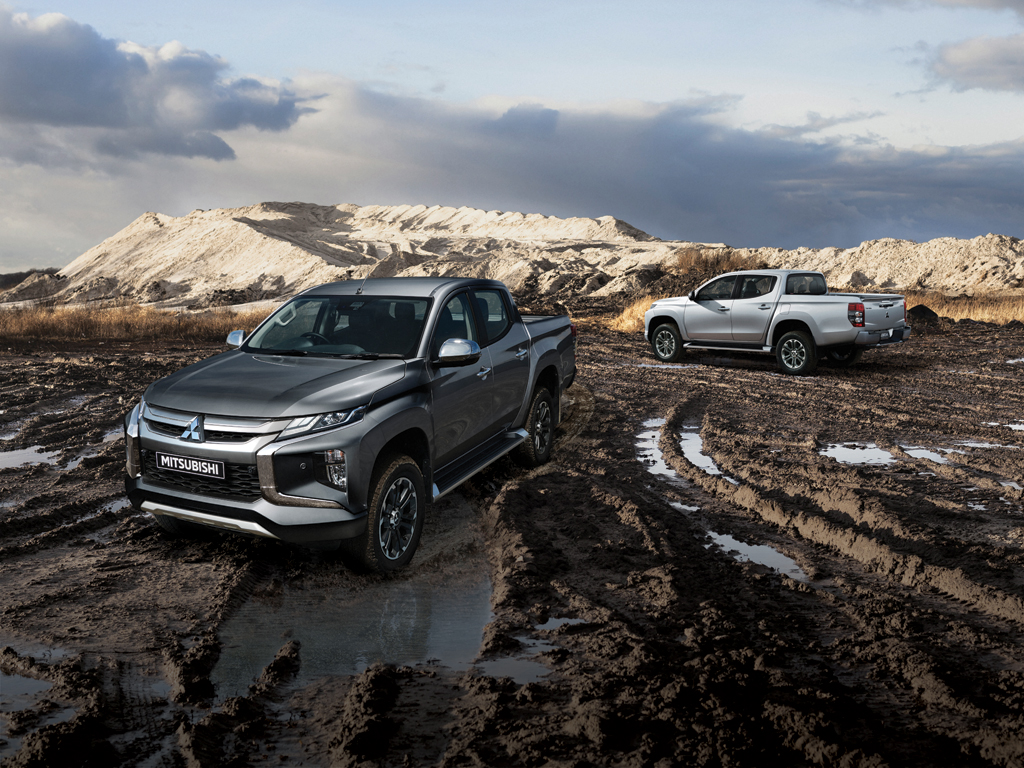Mitsubishi’s one-tonne pickup marks its 40th anniversary with a tough makeover, says Alex Grant.
SECTOR Pickup Power 181bhp Torque 430Nm Towing weight 3.5-tonnes
Mitsubishi might have become synonymous with plug-in hybrids, but trend-setting electrification hasn’t eroded the focus on its traditional strengths in pickups and rugged 4x4s. Sold in 150 markets, the L200 accounts for around a sixth of its annual volume – second only to the Outlander. It’s a household name from mines to mountains and a product important enough to warrant a substantial early refresh to take on multiple new rivals.
Arriving in the UK next summer, it’s a customer-centric update comprising more than 2,400 changes, on and under the skin. Each was derived from conversations with commercial customers reflecting a sector where one size really doesn’t fit all.
Sport-Utility Truck
Previous L200s have informed development of Mitsubishi’s SUVs and, with customers expecting pickups (particularly double-cab models) to feature the same levels of comfort, safety and technology as a passenger car, that’s come full circle. Although primarily a commercial vehicle, there’s significant global demand from customers for whom this has to work just as well as family transport outside work hours.
It’s certainly not short of presence. Every exterior metal panel, apart from the roof, was replaced during the refresh – which included redesigning the three different-sized load beds and door skins. However, accessories developed for the outgoing car, such as canopies, boxes, bed liners and sports bars will all fit on its successor. Visually, it’s a change big enough to feel like an all-new model.
The cabin layout has barely changed. It feels durable if light on soft-touch plastics, and a few new accents of satin silver help it avoid feeling too utilitarian. There are soft knee pads up front, to avoid bruises while off-roading, USB ports and device storage for front and rear passengers, plus additional air conditioning vents and controls for those sat in the back. It also gets a suite of assistance technologies, including autonomous emergency braking, blind spot monitoring and the ability to detect oncoming traffic while reversing out of a space. A simulated overhead parking view is available, too, which makes tight spaces and tracks easier to judge.
Durable and Capable
Mitsubishi sees electrification as an inevitability for the pickup segment but, for now, there’s no plan to offer a plug-in version of the L200, due to the weight, cost and range compromises of today’s battery technology. Instead, it says diesel is the best near-term solution. We tested the car with an updated version of the 181hp 2.4-litre turbodiesel from the old model, though the engine line-up for European markets won’t be confirmed until closer to the launch next summer.
UK trim levels and specification haven’t been confirmed either, but the aim was to make the newcomer easier to take off the beaten track than its predecessor. The L200 features a new six-speed automatic transmission as an alternative to the carry-over six-speed manual. Both include SUV-like selectable terrain modes for gravel, mud and snow, sand and rock, and hill descent control is new to the L200 too. The familiar high and low-ratio settings, with diff lock, are still available via the rotary dial on the centre console.
Meanwhile, the frame and front-end structure have been strengthened, and the new exterior panels are designed to improve pedestrian safety, offer better visibility of its extremities and to lift headlights and fog lights away from floods and damage.
At the Wheel
We had an early drive of unladen L200s, on and off-road, not far from the factory in Thailand where global production takes place. Mitsubishi’s claims of being able to offer SUV-like comfort stack up well on the rough tarmac of its biggest global market.
Upgrades versus the old car include extra sound deadening in the cabin, while noise and vibration are impressively well suppressed while cruising, particularly as a passenger. The seats are as good as you’d find in any SUV, even over long distances, and the new rear suspension setup – which uses larger-capacity shocks to improve ride comfort and roadholding – cuts out a surprising amount of the bounciness expected with an empty load bed.
It’s good to drive, too. There’s a reassuring directness and weight to the steering, and a similarly positive and car-like response while braking, helped by new two-piston brake calipers and larger discs up front. Peak torque comes in at 2,500rpm, which can mean shifting down to accelerate at motorway speeds, but precise gear shifts make this a pleasure. We only tested the automatic transmission off road, but the short stretch in high-ratio mode hinted that it’s as car-like as the manual.


